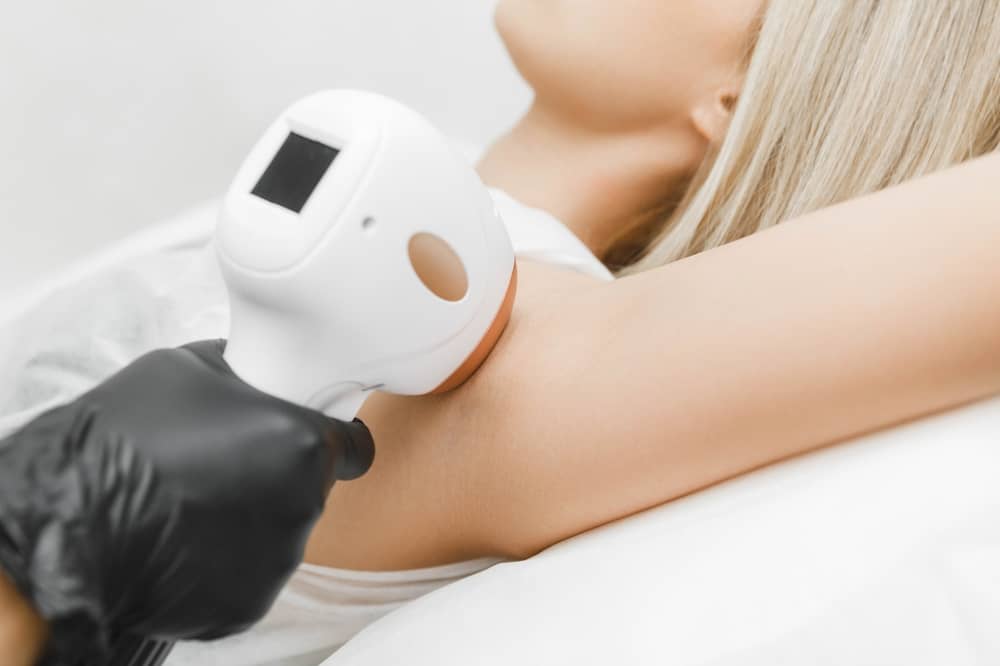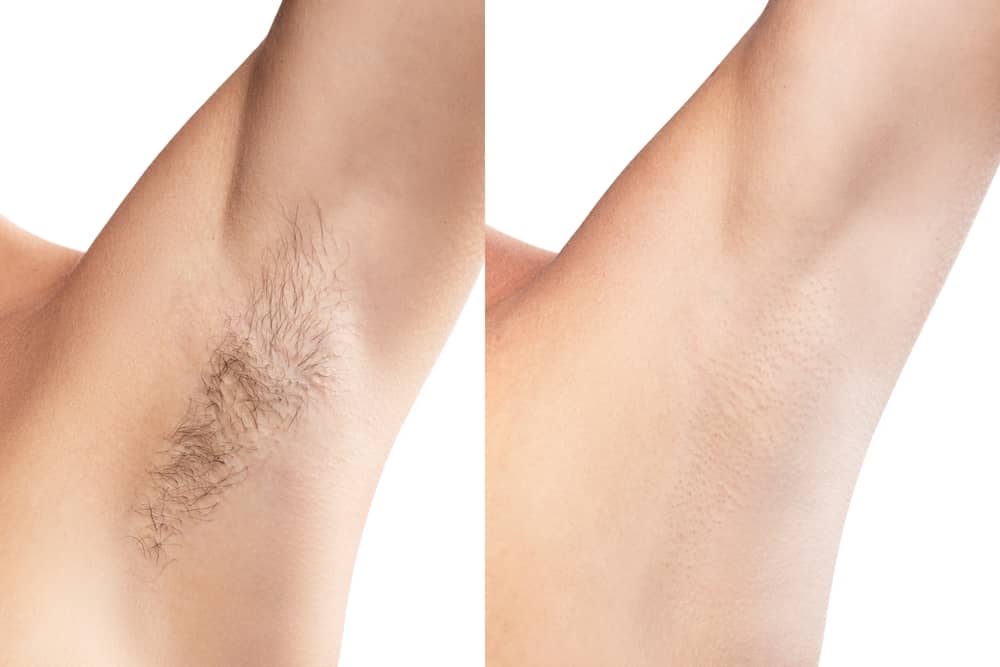Learn about the science, process, and care behind modern hair removal technology

How Laser Hair Removal Was Invented
Laser hair removal didn’t happen overnight. It took many smart doctors and scientists working together over many years to make it safe and effective.
The Early Days (1960s-1970s)
In 1960, a scientist named Theodore Maiman built the first laser at Hughes Research Laboratories. But it took another 20 years before doctors figured out how to use lasers to remove hair safely.
The Big Discovery (1983)
Two doctors, Dr. Rox Anderson and Dr. John Parrish, made a huge breakthrough at Massachusetts General Hospital. They discovered something called “selective photothermolysis” – which is just a fancy way of saying the laser can target dark hair without hurting your skin. They wrote about this discovery in a famous science journal called Science (Volume 220, Issue 4596, pages 524-527).
The First Real Tests (1990s)
Dr. Melanie Grossman at Columbia University was one of the first doctors to test laser hair removal on real patients in the 1990s. She used ruby lasers and found they really worked. She shared her results in Dermatologic Surgery (Volume 22, Issue 9, pages 779-783, 1996).
When the Government Said “OK” (FDA Approval)
The Food and Drug Administration (FDA) had to make sure laser hair removal was safe before allowing it:
- 1995: First laser got approval (called ThermoLase)
- 1997: Ruby lasers got the green light
- 1998: Alexandrite lasers were approved
- 2000: Nd:YAG lasers were approved for all skin colors
Important: This article gives you general information only. It’s not medical advice. Your results might be different, so always talk to a qualified doctor about what’s right for you.
Who Is a Good Candidate for Laser Hair Removal?

The Best Candidates
Doctors have studied who gets the best results from laser hair removal. Research in the Journal of the American Academy of Dermatology (Volume 51, Issue 4, pages 584-591, 2004) shows the best candidates have:
- Dark, thick hair: The laser works best on hair with lots of color (melanin)
- Light to medium skin: Though newer lasers work on darker skin too
- Hair that’s growing: The laser only works on hair that’s actively growing
- Realistic expectations: You’ll need several treatments, not just one
Special Cases
Some people need extra care, according to studies in Lasers in Medical Science (Volume 28, Issue 3, pages 779-786, 2013):
- People with darker skin: Need special lasers (Nd:YAG) that are safer
- Hormonal issues: People with conditions like PCOS might need more treatments
- Certain medications: Some medicines can make your skin sensitive to light
When You Shouldn’t Get Laser Hair Removal
Doctors won’t do laser hair removal if you have:
- Skin infections where you want treatment
- A history of bad scarring (keloids)
- You’re pregnant (not dangerous, but doctors usually wait)
- You’ve used Accutane in the last 6 months
Getting Ready for Your Treatment: What You Need to Do
4-6 Weeks Before Your Appointment
Stop Certain Hair Removal Methods
- No more plucking or waxing: Stop 4-6 weeks before treatment
- No electrolysis: Stop at least 6 weeks before
- Keep shaving: This is actually good and helps the treatment work
Prepare Your Skin
Research from Dermatologic Surgery (Volume 35, Issue 2, pages 188-200, 2009) shows you need to:
- Stay out of the sun: No tanning for at least 4 weeks before and after
- Stop using certain products:
- Retinoids (like Retin-A) – stop 1 week before
- Acid products (AHA/BHA) – stop 2 days before
1-2 Days Before Treatment
- Shave the area: Hair should be very short, like stubble
- Clean your skin: Remove all makeup, deodorant, and lotions
- Don’t use: Products with alcohol that might make your skin sensitive
What Your Doctor Needs to Know
Your doctor must write down:
- What medicines you take
- If you’ve had laser treatments before
- Any skin problems you have
- If you’ve been in the sun recently
Everyone is different. Always follow the exact instructions your doctor gives you.
What Happens During Treatment: The Step-by-Step Process

Types of Laser Machines
There are several FDA-approved lasers that doctors use:
Alexandrite Lasers (755nm)
- Work best on light to medium skin
- Fast treatment
- Good for fine to medium hair
Nd:YAG Lasers (1064nm)
- Safe for all skin colors, including dark skin
- Goes deeper into the skin
- Very safe
Diode Lasers (800-810nm)
- Work on many different skin types
- Good balance of safety and results
- Often used for large body areas
What Your Doctor Will Do
Step 1: Check You Out
- Look at your skin type
- See how much hair you have and what color it is
- Review your medical history
- Mark the areas to be treated
Step 2: Get You Ready
- Give you special glasses to protect your eyes
- Clean your skin
- Put cooling gel on your skin (if needed)
- Test a small spot first
Step 3: Use the Laser Your doctor follows specific rules from Lasers in Surgery and Medicine (Volume 41, Issue 10, pages 705-711, 2009):
- Adjust the laser settings: Based on your hair and skin type
- Set the right power level: Just right for you
- Choose the right spot size: For the best treatment
- Keep your skin cool: So it doesn’t hurt too much
Step 4: Check How You’re Doing
- Look at how your skin responded
- Apply something cool and soothing
- Make sure you’re comfortable
- Schedule your next appointment
How Many Treatments You’ll Need
Studies in the Journal of Cosmetic and Laser Therapy (Volume 14, Issue 4, pages 179-184, 2012) show:
- Most people need 6-8 treatments for the best results
- Wait 4-8 weeks between treatments
- You might need touch-ups once a year
Taking Care of Yourself After Treatment
Right After Treatment (First 24 Hours)
What’s Normal Research in Dermatologic Surgery (Volume 26, Issue 9, pages 848-856, 2000) says it’s normal to have:
- Red skin that lasts a few hours to a day
- Small bumps around where the hair was
- Skin that feels like you have a mild sunburn
What to Do Right Away
- Use cool cloths: Put them on your skin for 10-15 minutes every few hours
- Wash gently: Use cool water and mild soap with no perfume
- Stay cool: No hot showers, saunas, or being out in hot sun
The First Week After Treatment
How to Take Care of Your Skin
- Use moisturizer: Choose one with no perfume that won’t irritate your skin
- Protect from sun: Use sunscreen with SPF 30 or higher every day
- Be gentle: Don’t scrub or use harsh products

What Not to Do
- Don’t exercise hard: For 1-2 days if it makes you sweat a lot
- Don’t swim: Stay out of pools with chlorine for 2 days
- Avoid heat: No saunas, hot tubs, or too much sun
Weeks 2-4 After Treatment
Your Hair Will Fall Out Studies in Lasers in Medical Science (Volume 23, Issue 4, pages 375-381, 2008) show:
- Treated hair usually falls out 1-3 weeks later
- This is good – it means the treatment worked
- You can gently scrub to help the hair come out
Keep Taking Care of Your Skin
- You can shave: Between treatments if you need to
- Watch for problems: Tell your doctor about any unusual changes
- Keep using sunscreen: During all your treatments
Does It Really Work? What the Studies Say
How Well Does It Work?
Many studies show laser hair removal really works:
- Journal of the American Academy of Dermatology (Volume 58, Issue 2, pages 281-285, 2008): 90% of hair was gone after all treatments
- Lasers in Surgery and Medicine (Volume 39, Issue 8, pages 671-675, 2007): Hair was still gone 12 months later

Is It Safe?
A big safety study in Dermatologic Surgery (Volume 34, Issue 6, pages 823-830, 2008) found:
- Serious problems: Happen in less than 1% of people when done by qualified doctors
- Minor side effects: Like redness and swelling happen to 15-20% of people
- Skin color changes: Very rare when done correctly
Government Rules
All laser hair removal must follow:
- FDA rules: Only approved machines can be used
- State medical rules: Doctors must be properly trained
- Safety rules: Special eye protection and laser safety
Important Things You Need to Know
What the FDA Says The FDA has approved laser machines for “permanent hair reduction,” not complete hair removal forever. Your results might be different based on your hair color, skin type, hormones, and how well you follow the treatment plan.
Your Privacy is Protected All your information, treatment records, and photos are kept private according to HIPAA laws. You must give permission before your information can be used for anything other than your medical care.
This is Not Medical Advice This article teaches you about laser hair removal but is not medical advice. Your treatment plan should be made with a qualified doctor. Results are different for everyone, and not everyone can get laser hair removal. Always talk to a board-certified dermatologist or qualified medical professional before starting treatment.
Only Go to Qualified Professionals Laser hair removal should only be done by qualified medical professionals using FDA-approved machines in proper medical offices. Make sure your doctor has the right training and experience with laser systems.
Need similar content for your medical aesthetics practice? I specialize in creating SEO-optimized, compliant content that attracts qualified patients. Feel free to reach out.
📧 evelyn@theperfectedproof.com🌐 theperfectedproof.com
To learn more about whether laser hair removal is right for you, schedule a consultation with a qualified medical professional in your area.

View comments
+ Leave a comment